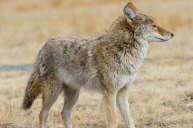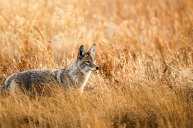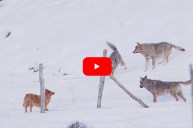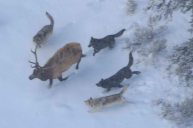Colossal Biosciences took the world by storm when they brought ancient dire wolves back to life. As part of their de-extinction project, this group used ancient DNA from fossils to recreate the full genome of the dire wolf. While the majority of the world was thrilled over these wolves making a comeback, others were terrified. Now, biologists in Wyoming are arguing that the new dire wolves could destroy everything if they are reintroduced to the wild.
Little Howl Major Impact
You?re hearing the first howl of a dire wolf in over 10,000 years
Back from extinction
using ancient DNA from fossils up to 72,000 years old, Colossal reconstructed a full genome , through precise CRISPR edits, and brought this species to life
pic.twitter.com/jMVtnKtT9m— Science girl (@gunsnrosesgirl3) April 7, 2025
This video went viral almost immediately. I mean, how could it not? It is probably one of the cutest videos on the internet right now. Look at that adorable little fluff ball! Not to mention that the world was amazed that scientists have been able to re-create an animal that went extinct. It is pretty exciting stuff.
So why are these biologists so concerned? As it turns out they are not concerned with their creation, just with their potential release in the wild. Currently, the three pups are "being raised in an undisclosed nature preserve that Colossal Biosciences describes as carrying the traits of the long-lost giant canines."
That is where these Wyoming biologists want them to stay. Chuck Preston, who was the founding curator of the Draper Natural History Museum, spoke with Cowboy State Daily on the matter. "I hope these animals live well in captivity for the rest of their lives," he claimed. While he thinks it is incredible what the scientists have been able to do, he is greatly concerned about the effects these dire wolves could have on Wyoming's ecosystem. In particular they are concerned that the dire wolves could destroy everything.
A Whole New Predator
Dire wolves were alive during a different time. 12,500-13,000 years ago, prey was much bigger. Imagine the size and strength you would need to take down a creature like a giant ground sloth? Now, bring that predator back without the prey. Biologists are now warning that the reintroduction of these species could destroy everything.
When speaking with Cowboy State Daily Robert Crabtree — the founder, chief scientist and president of the Yellowstone Ecological Research Center— had this to say. "If we can't tolerate coyotes, and we certainly don't tolerate gray wolves, there's no way we could tolerate dire wolves."
Basically he pointed out that these new dire wolves would tear through all prey available in today's day and age. Not to mention bully gray wolves out of the top spot as apex predators. Additionally, Mr. Preston argues that the dire wolves genotypes are not as complete as the scientists led on.
"An incomplete genotype is an incomplete dire wolf," he explained. Despite his reservations, Preston is on board to see how things progress with the dire wolves. He stated, "I am intrigued by the possibility of bringing back a species that was extirpated by recent human activity, provided that we have a complete genotype, adequate genetic diversity, and historical ecosystem niche open."




